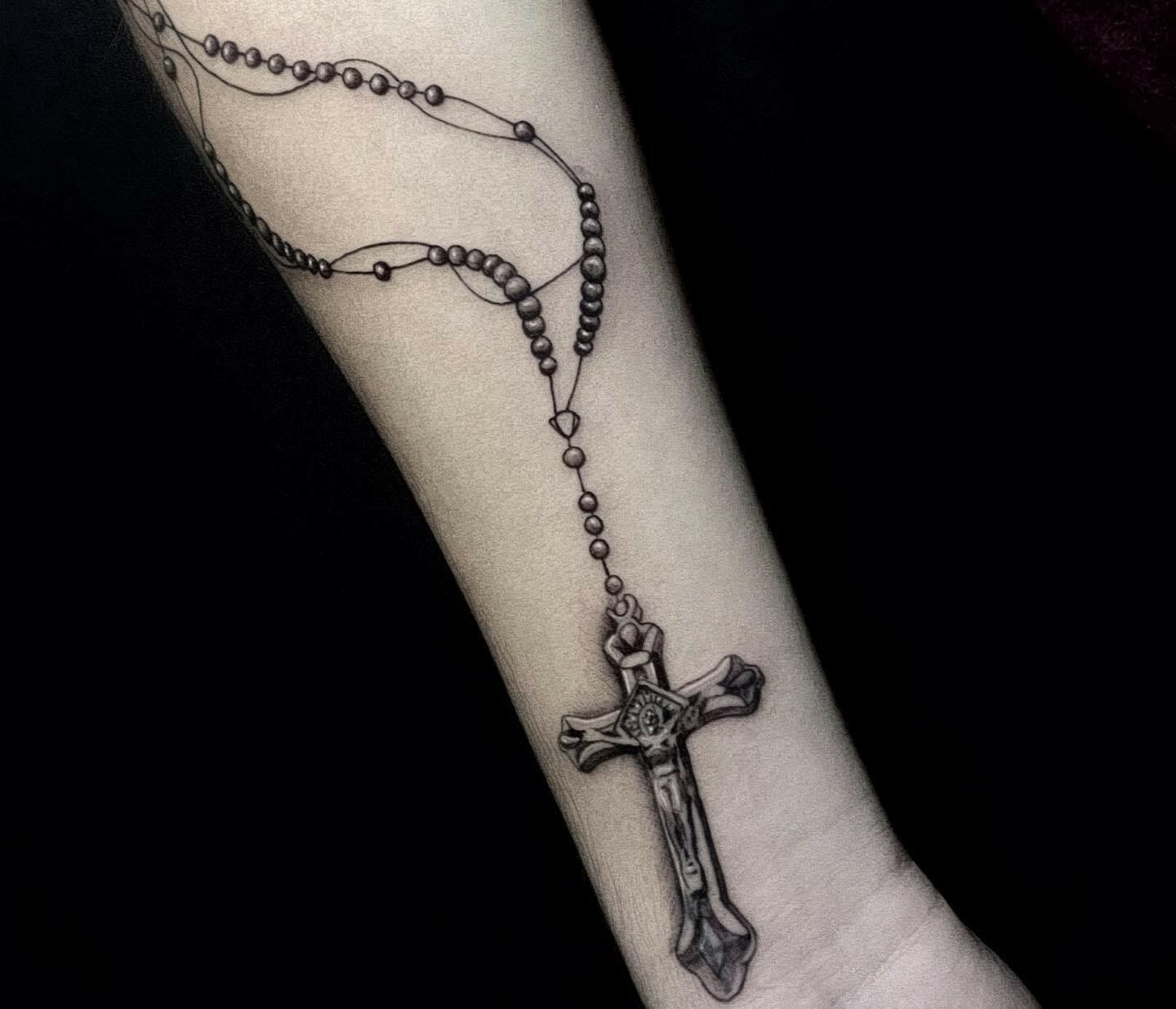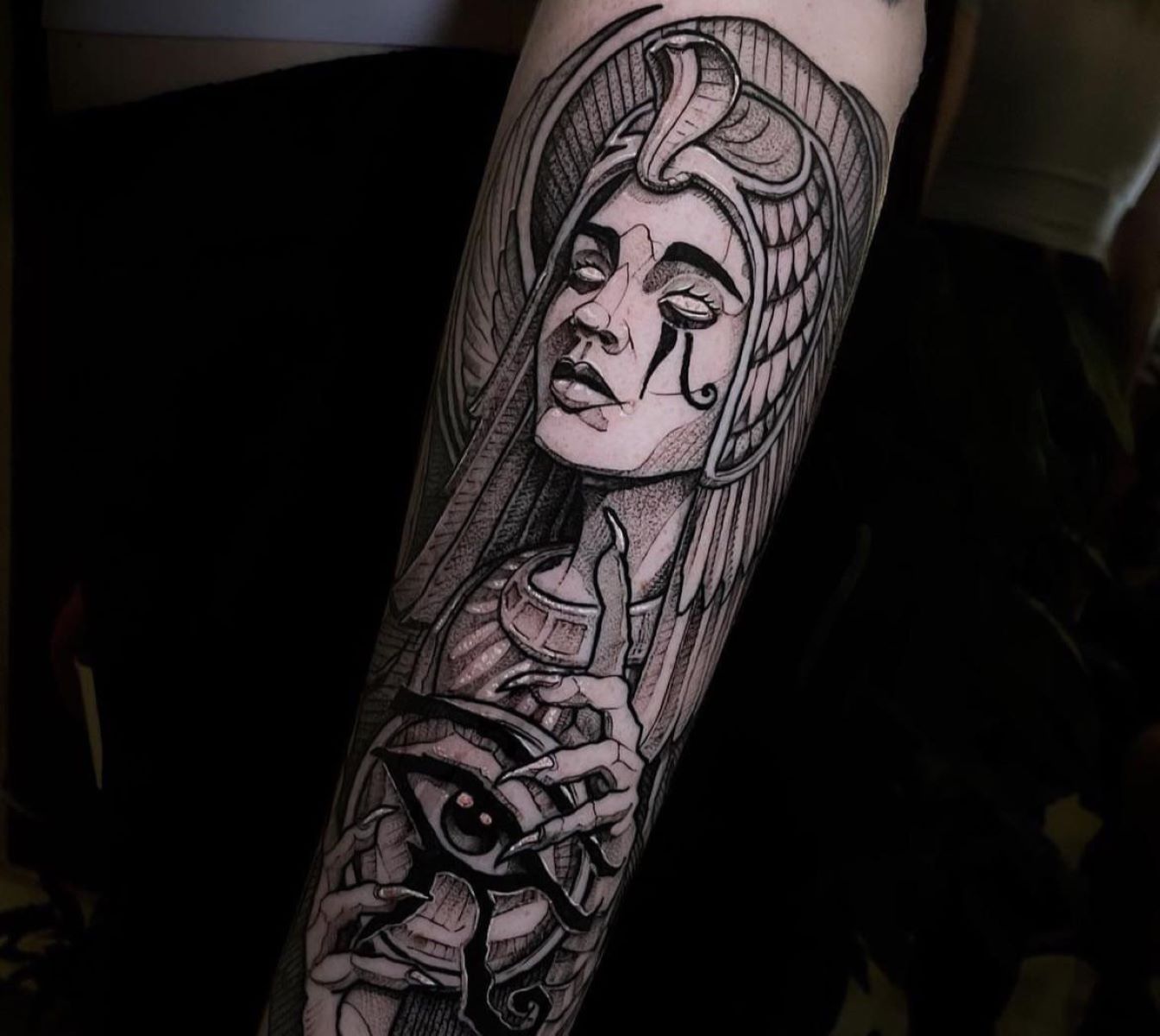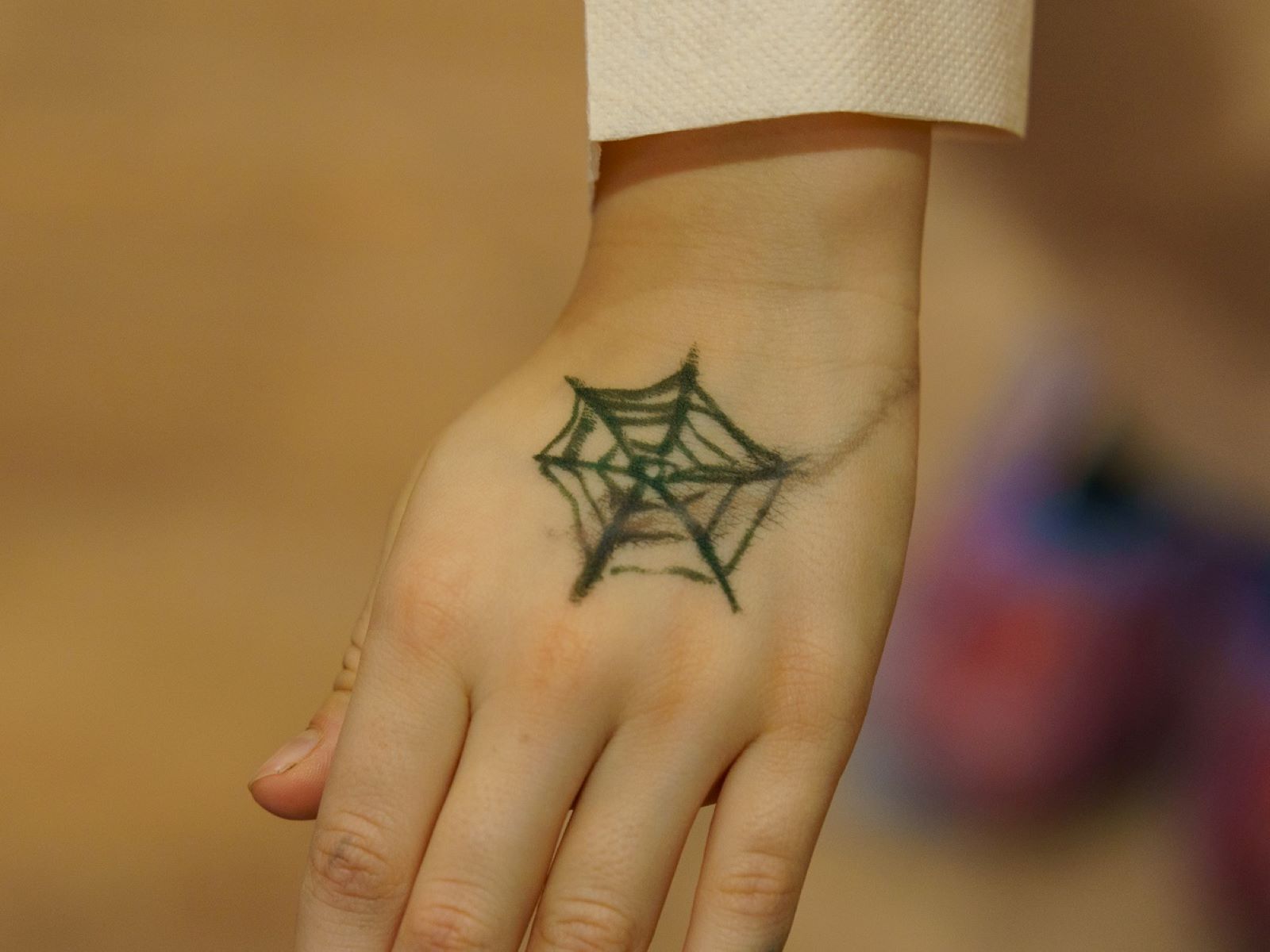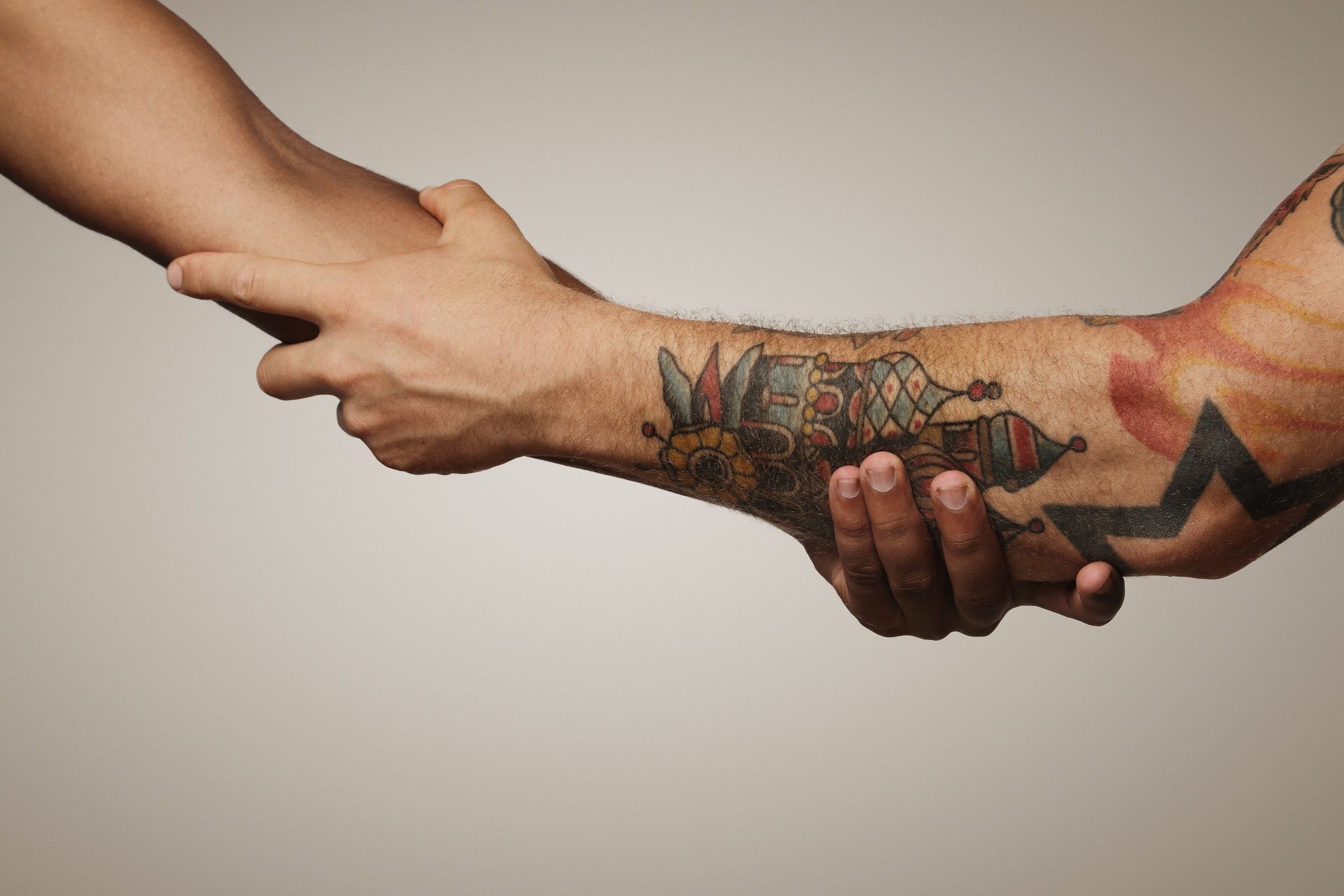Home>Opinion and Editorial>The Controversial Truth About Rosary Tattoos


Opinion and Editorial
The Controversial Truth About Rosary Tattoos
Published: January 25, 2024
Discover the controversial truth about rosary tattoos in this opinion and editorial piece. Gain insight into the cultural and religious significance of this popular body art.
(Many of the links in this article redirect to a specific reviewed product. Your purchase of these products through affiliate links helps to generate commission for Regretless.com, at no extra cost. Learn more)
Table of Contents
Introduction
Rosary tattoos have long been a subject of fascination, controversy, and deep personal significance. The intertwining of religious devotion, artistic expression, and cultural symbolism has made rosary tattoos a compelling and complex form of body art. These tattoos often hold profound meaning for individuals, serving as a visual representation of their faith, personal beliefs, or cultural heritage. However, they have also sparked debates and discussions regarding their appropriateness, particularly within religious and cultural contexts.
The intricate designs of rosary tattoos, featuring beads and a cross, are visually striking and carry a rich history that dates back centuries. Their presence on the skin serves as a constant reminder of devotion, spirituality, and the interconnectedness of faith and art. As we delve into the history, symbolism, controversy, and cultural significance of rosary tattoos, it becomes evident that these inked creations are more than mere decorations—they are deeply rooted in tradition, spirituality, and individual narratives.
History of Rosary Tattoos
The history of rosary tattoos is intertwined with the rich tapestry of religious and cultural traditions. The origins of the rosary itself can be traced back to the early medieval period, where it served as a tool for prayer and meditation in the Catholic faith. The rosary, with its distinct arrangement of beads and a cross, became a powerful symbol of devotion and spirituality.
The practice of adorning the skin with rosary-inspired designs has roots in the longstanding tradition of religious body art. Early depictions of rosary tattoos can be found in the works of renowned artists and explorers who documented encounters with indigenous cultures. These encounters often revealed the presence of body art that incorporated elements resembling rosaries, reflecting the fusion of religious symbolism and personal expression.
In the realm of Western tattoo culture, rosary tattoos gained popularity during the 20th century, particularly among individuals seeking to outwardly display their faith and commitment to religious ideals. The intricate and delicate nature of rosary beads and the cross presented tattoo artists with a unique artistic challenge, leading to the creation of visually stunning and meaningful designs.
Over time, rosary tattoos evolved to encompass a diverse range of styles and interpretations, reflecting the individuality and creativity of those who choose to adorn their bodies with these symbolic images. From traditional black ink designs to vibrant and elaborate compositions, rosary tattoos have become a prominent fixture in the realm of body art, transcending cultural boundaries and resonating with individuals from various walks of life.
The history of rosary tattoos is a testament to the enduring power of religious symbolism and personal expression. As these tattoos continue to captivate the hearts and minds of individuals around the world, their rich historical legacy remains an integral part of their allure and significance.
Symbolism of Rosary Tattoos
The symbolism of rosary tattoos extends far beyond their aesthetic appeal, delving into the realms of spirituality, faith, and personal significance. Each element of a rosary tattoo carries profound symbolism, making it a deeply meaningful and introspective form of body art.
The beads of the rosary, typically depicted as a string of interconnected spheres, symbolize the repetitive prayers and meditative reflections offered by the faithful. Each bead represents a prayer or a moment of contemplation, serving as a tangible reminder of the devotion and spiritual journey undertaken by the wearer. The tactile nature of the beads, when translated into a tattoo, creates a permanent connection to the act of prayer and meditation, fostering a sense of spiritual presence and mindfulness.
Central to the rosary is the cross, a universal symbol of sacrifice, redemption, and divine love within Christian traditions. When incorporated into a rosary tattoo, the cross serves as a potent emblem of faith, embodying the enduring message of hope and salvation. Its presence on the skin signifies a deeply personal commitment to the teachings and values upheld by the wearer, encapsulating the essence of their spiritual identity.
Beyond its religious connotations, the rosary tattoo holds broader symbolism related to endurance, unity, and interconnectedness. The intricate arrangement of beads and the cross reflects the interconnected nature of humanity and the enduring strength found in collective faith and perseverance. For many individuals, a rosary tattoo represents a bond with their community, a testament to their resilience, and a visual affirmation of their place within the larger tapestry of human experience.
Moreover, the act of adorning one's body with a rosary tattoo can be seen as a declaration of personal faith and a visual testimony to the values and beliefs that guide one's life. It serves as a tangible expression of devotion, providing a constant source of spiritual inspiration and strength in times of joy, challenge, and contemplation.
In essence, the symbolism of rosary tattoos transcends mere decoration, offering a profound reflection of the wearer's innermost convictions, spiritual journey, and interconnectedness with the broader human experience. These tattoos stand as enduring testaments to faith, unity, and the enduring power of spiritual symbolism etched into the very fabric of one's being.
Controversy Surrounding Rosary Tattoos
The allure of rosary tattoos is undeniably intertwined with controversy, sparking fervent debates and discussions within religious, cultural, and artistic spheres. At the heart of this controversy lies the intersection of sacred symbolism and the act of permanently etching it onto the skin. While for some, rosary tattoos serve as a deeply personal expression of faith and spirituality, for others, they raise complex ethical and religious considerations.
One of the primary points of contention surrounding rosary tattoos revolves around their perceived appropriateness within religious contexts. Critics argue that the act of turning a sacred religious object, such as the rosary, into a form of body art may be seen as disrespectful or trivializing the significance of the symbol. This viewpoint stems from the belief that certain religious symbols should be revered and honored in specific ways, and that using them as decorative elements on the body may diminish their sanctity.
Furthermore, the controversy surrounding rosary tattoos extends to concerns about cultural appropriation and misrepresentation. In an increasingly interconnected world, the adoption of religious symbols from one culture by individuals outside of that culture has raised questions about the respectful and responsible use of such symbols. Critics argue that the widespread popularity of rosary tattoos among individuals who may not adhere to the associated religious beliefs can lead to the misinterpretation or misrepresentation of the symbol's true significance.
Additionally, the controversy surrounding rosary tattoos intersects with broader discussions about the commercialization and commodification of religious and cultural symbols. Some critics argue that the mass production and commodification of rosary-inspired jewelry and accessories, often marketed as fashion statements, contribute to the trivialization of the symbol's spiritual and religious significance. When translated into the realm of body art, these concerns are further amplified, prompting discussions about the ethical implications of using religious symbols for aesthetic purposes.
Amidst these debates and controversies, it is essential to recognize the deeply personal and subjective nature of individual choices to adorn their bodies with rosary tattoos. While the controversies surrounding these tattoos underscore complex ethical and religious considerations, they also reflect the evolving dynamics of cultural expression, personal identity, and the intersection of faith and art.
The controversy surrounding rosary tattoos serves as a poignant reminder of the multifaceted nature of religious and cultural symbolism, prompting individuals to engage in nuanced discussions about the ethical, spiritual, and societal implications of incorporating sacred symbols into the realm of body art.
Religious Perspectives on Rosary Tattoos
Religious perspectives on rosary tattoos encompass a diverse spectrum of beliefs, interpretations, and ethical considerations within various faith traditions. For many devout individuals, the act of adorning the skin with rosary tattoos is viewed through the lens of reverence, personal devotion, and the expression of deeply held spiritual convictions.
Within the Catholic tradition, the rosary holds profound significance as a tool for prayer, meditation, and spiritual contemplation. Devout Catholics often view the rosary as a sacred object imbued with deep religious symbolism, representing the life, teachings, and sacrifice of Jesus Christ, as well as the intercession of the Virgin Mary. In this context, the decision to translate the rosary into a tattoo is a matter of personal conscience and spiritual discernment. While some individuals may view it as a sincere expression of their faith and a constant reminder of their spiritual commitments, others may approach it with caution, mindful of the potential implications within the framework of religious tradition.
From a broader Christian perspective, the symbolism of the rosary as a representation of devotion, faith, and the redemptive message of the cross resonates deeply with individuals across denominational lines. The act of incorporating rosary tattoos into one's body art can be seen as a visual testimony to the enduring significance of Christian faith and the transformative power of spiritual beliefs. However, the diverse theological interpretations within Christianity give rise to varying perspectives on the appropriateness of using religious symbols as permanent body adornments, leading to ongoing discussions and reflections within Christian communities.
Beyond the realm of Christianity, rosary tattoos intersect with the beliefs and practices of individuals from diverse religious traditions, including Islam, Buddhism, Hinduism, and others. Each tradition brings its own unique perspectives on the use of religious symbols and the significance of body art within the context of faith and spirituality. The decision to adorn the skin with rosary tattoos is thus influenced by a tapestry of religious perspectives, ethical considerations, and personal convictions that reflect the intricate interplay of spirituality and cultural identity.
In navigating the religious perspectives on rosary tattoos, individuals are called to engage in introspection, dialogue, and respectful consideration of the diverse viewpoints that shape the ethical and spiritual dimensions of their choices. The intersections of faith, art, and personal expression within the realm of rosary tattoos invite individuals to embark on a journey of self-discovery, spiritual discernment, and mindful reflection on the profound implications of embodying sacred symbols within the canvas of their skin.
Cultural Significance of Rosary Tattoos
The cultural significance of rosary tattoos extends beyond religious symbolism, encompassing a tapestry of traditions, heritage, and personal narratives that resonate deeply within diverse cultural contexts. These tattoos serve as visual expressions of cultural identity, historical legacies, and the enduring connections between individuals and their cultural heritage.
In many cultures, the rosary holds profound significance as a symbol of faith, devotion, and intergenerational traditions. Adorning the skin with rosary tattoos becomes a powerful means of honoring and preserving cultural heritage, serving as a tangible link to ancestral customs, spiritual practices, and communal values. For individuals with roots in Catholic-majority countries, such as Italy, Spain, and the Philippines, rosary tattoos embody a profound connection to their cultural and religious heritage, reflecting the enduring influence of Catholic traditions on their identity and sense of belonging.
Furthermore, the cultural significance of rosary tattoos extends to communities where the rosary holds deep spiritual and communal importance beyond the confines of Catholicism. In regions such as Latin America, the Philippines, and parts of Africa, the rosary is intertwined with vibrant cultural celebrations, processions, and familial traditions. A rosary tattoo, therefore, becomes a visual testament to the rich tapestry of cultural practices, communal rituals, and the enduring bonds that unite individuals within these diverse cultural landscapes.
Moreover, the act of adorning the skin with rosary tattoos serves as a form of cultural expression, affirming the enduring influence of religious and spiritual symbolism within the broader cultural fabric. The intricate designs and symbolism of the rosary resonate with individuals from diverse cultural backgrounds, transcending linguistic and geographical boundaries to become a universal symbol of faith, resilience, and interconnectedness.
In essence, the cultural significance of rosary tattoos lies in their ability to encapsulate the interwoven threads of religious tradition, cultural heritage, and personal identity. These tattoos serve as visual narratives, weaving together the diverse tapestries of human experience, spirituality, and cultural belonging. As individuals choose to etch the rosary onto their skin, they honor the enduring significance of cultural traditions, spiritual legacies, and the timeless resonance of faith within the ever-evolving landscapes of human culture.
Modern Interpretations of Rosary Tattoos
In contemporary society, rosary tattoos have undergone a fascinating evolution, reflecting the dynamic interplay of artistic innovation, personal expression, and shifting cultural landscapes. Modern interpretations of rosary tattoos encompass a diverse array of styles, meanings, and artistic approaches, showcasing the enduring relevance of this timeless symbol within the realm of body art.
One notable facet of modern rosary tattoos lies in the fusion of traditional religious symbolism with innovative artistic techniques. Tattoo artists adeptly blend classic elements of the rosary, such as beads and crosses, with contemporary design aesthetics, resulting in visually stunning and intricately detailed compositions. From vibrant watercolor interpretations to minimalist line work, these modern renditions of rosary tattoos exemplify the fusion of timeless spiritual symbolism with the boundless creativity of the contemporary art world.
Moreover, the meanings and interpretations associated with rosary tattoos have expanded to encompass a broader spectrum of personal narratives and cultural perspectives. While traditional religious symbolism remains a cornerstone of many rosary tattoos, individuals have imbued these designs with personal significance, using them to commemorate milestones, honor loved ones, or express their unique spiritual journeys. This shift towards individualized interpretations underscores the deeply personal nature of rosary tattoos, highlighting their capacity to serve as visual chronicles of one's beliefs, experiences, and aspirations.
Furthermore, the prevalence of rosary tattoos within popular culture has contributed to their reimagining as symbols of resilience, solidarity, and empowerment. In the realm of music, fashion, and media, rosary tattoos have emerged as iconic emblems of strength and self-expression, embraced by individuals from diverse backgrounds seeking to convey messages of hope, unity, and personal transformation. This contemporary reinterpretation of rosary tattoos as symbols of empowerment reflects their enduring relevance within the ever-evolving narratives of human experience and cultural expression.
In essence, modern interpretations of rosary tattoos showcase the enduring allure and adaptability of this timeless symbol within the contemporary landscape of body art. As individuals continue to seek new ways to infuse these tattoos with personal meaning and artistic innovation, the legacy of the rosary as a profound emblem of faith, cultural heritage, and individual expression remains vibrantly alive, resonating with the diverse tapestries of human experience and creativity.
Conclusion
In conclusion, the intricate tapestry of history, symbolism, controversy, religious perspectives, cultural significance, and modern interpretations surrounding rosary tattoos reflects the enduring power of this timeless symbol within the realm of body art. From its origins as a tool for prayer and meditation to its evolution as a deeply personal and culturally significant form of expression, the rosary tattoo stands as a testament to the enduring resonance of faith, heritage, and personal narratives.
The rich history of rosary tattoos, rooted in religious and cultural traditions, underscores their profound significance as visual representations of devotion, spirituality, and interconnectedness. As individuals choose to etch these timeless symbols onto their skin, they honor the enduring legacies of religious traditions, cultural heritage, and the timeless resonance of faith within the ever-evolving landscapes of human experience.
The symbolism of rosary tattoos extends far beyond their aesthetic appeal, delving into the realms of spirituality, faith, and personal significance. Each element of a rosary tattoo carries profound symbolism, making it a deeply meaningful and introspective form of body art. From the beads representing prayers and meditative reflections to the cross symbolizing sacrifice and redemption, rosary tattoos serve as enduring testaments to faith, unity, and the enduring power of spiritual symbolism etched into the very fabric of one's being.
The controversies surrounding rosary tattoos serve as a poignant reminder of the multifaceted nature of religious and cultural symbolism, prompting individuals to engage in nuanced discussions about the ethical, spiritual, and societal implications of incorporating sacred symbols into the realm of body art. While these debates underscore complex ethical and religious considerations, they also reflect the evolving dynamics of cultural expression, personal identity, and the intersection of faith and art.
In navigating the religious perspectives on rosary tattoos, individuals are called to engage in introspection, dialogue, and respectful consideration of the diverse viewpoints that shape the ethical and spiritual dimensions of their choices. The intersections of faith, art, and personal expression within the realm of rosary tattoos invite individuals to embark on a journey of self-discovery, spiritual discernment, and mindful reflection on the profound implications of embodying sacred symbols within the canvas of their skin.
The cultural significance of rosary tattoos lies in their ability to encapsulate the interwoven threads of religious tradition, cultural heritage, and personal identity. These tattoos serve as visual narratives, weaving together the diverse tapestries of human experience, spirituality, and cultural belonging. As individuals choose to etch the rosary onto their skin, they honor the enduring significance of cultural traditions, spiritual legacies, and the timeless resonance of faith within the ever-evolving landscapes of human culture.
In essence, the enduring allure and adaptability of rosary tattoos within the contemporary landscape of body art showcase the enduring relevance of this timeless symbol. As individuals continue to seek new ways to infuse these tattoos with personal meaning and artistic innovation, the legacy of the rosary as a profound emblem of faith, cultural heritage, and individual expression remains vibrantly alive, resonating with the diverse tapestries of human experience and creativity.














